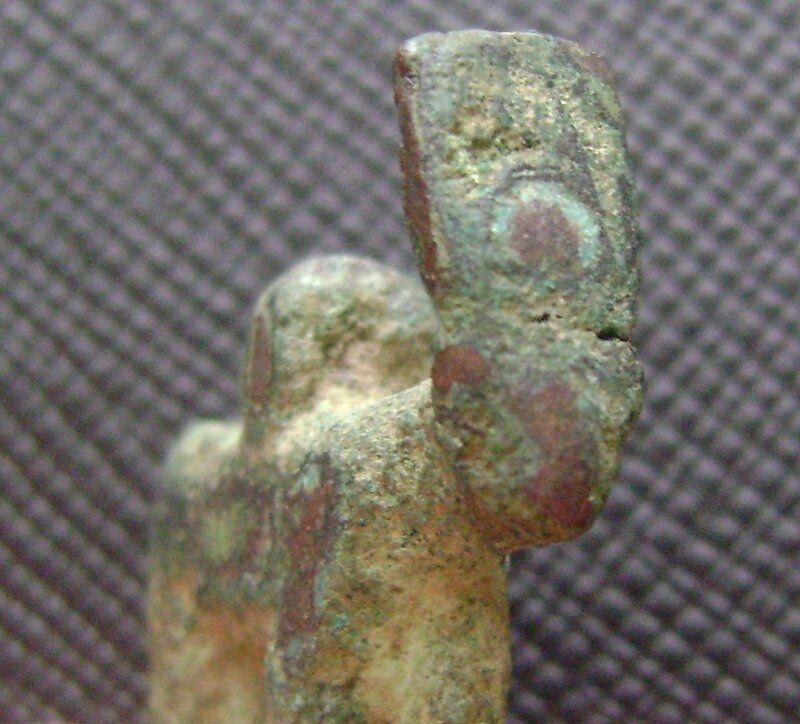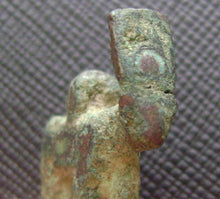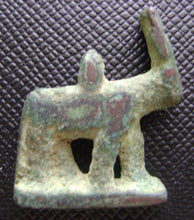Ancient Egyptian Bronze Amulet of Apis Bull Ex. Gustave Jéquier (1868-1946)
Regular price
$895.00
Sale
Ancient Bronze amulet representing the Apis bull, standing in a walking position. On his head are the horns, the solar disc and the uraeus, and there is a suspension loop on the back. Has a nice patina and dates to the Late Period. Measures 1" inch in height. Very nice piece!
While it was alive the Apis bull was regarded as the Ba of Ptah and its sanctuary was near the temple of Ptah in Mennefer. The sanctuary was positioned near the bull's embalming house and this is how the bull became associated to Osiris after death. Greek historian, Herodotus wrote that the Apis bull was conceived from a bolt of lightning, with the image of a vulture on his back (similar to this example) double hairs on his tail and a scarab mark under his tongue. Also was created with a black with a white diamond on his forehead. Lightning was thought to be Ptah by the Egyptians thus in the form of a celestial fire, who mated with a heifer. Due to the fact that he had a creation god as his father this linked and gave the Apis bull the status of a fertility symbol. The heifer that produced the bull was venerated as a form of the goddess Isis. There was only one Apis bull at a time, and the cult of the Apis bull started at the beginning of Egyptian history. While alive, the bull was known as the 'Spokesman' of Ptah and his 'Glorious Soul'. Many animals played a part in the religious life of ancient Egypt as many of the examples offered by Galleria Delvecchio portray. However, the sacred bull of Apis is perhaps the best known and when the bull died it was embalmed. Near the centre of Memphis many of the large tables where the bulls were embalmed have survived. The mummified bull was buried at Saqqara. From the New Kingdom onwards the burials took place at the Serapeum, a maze of large underground caverns in the desert. Each Apis bull had its own sarcophagus and was thus placed in one of these large underground chambers. On stone stelae set into the walls of the burial place was recorded the particulars regarding its birth and death.
For reference see: G. Robins, The art of ancient Egypt (London, The British Museum Press, 1997)
Provenance: Collected by Gustave Jéquier (1868-1946)
Ex. Billy Jamieson Collection, 2009 (1954-2011)
Authentication: Gayle Gibson, Royal Ontario Museum Toronto


